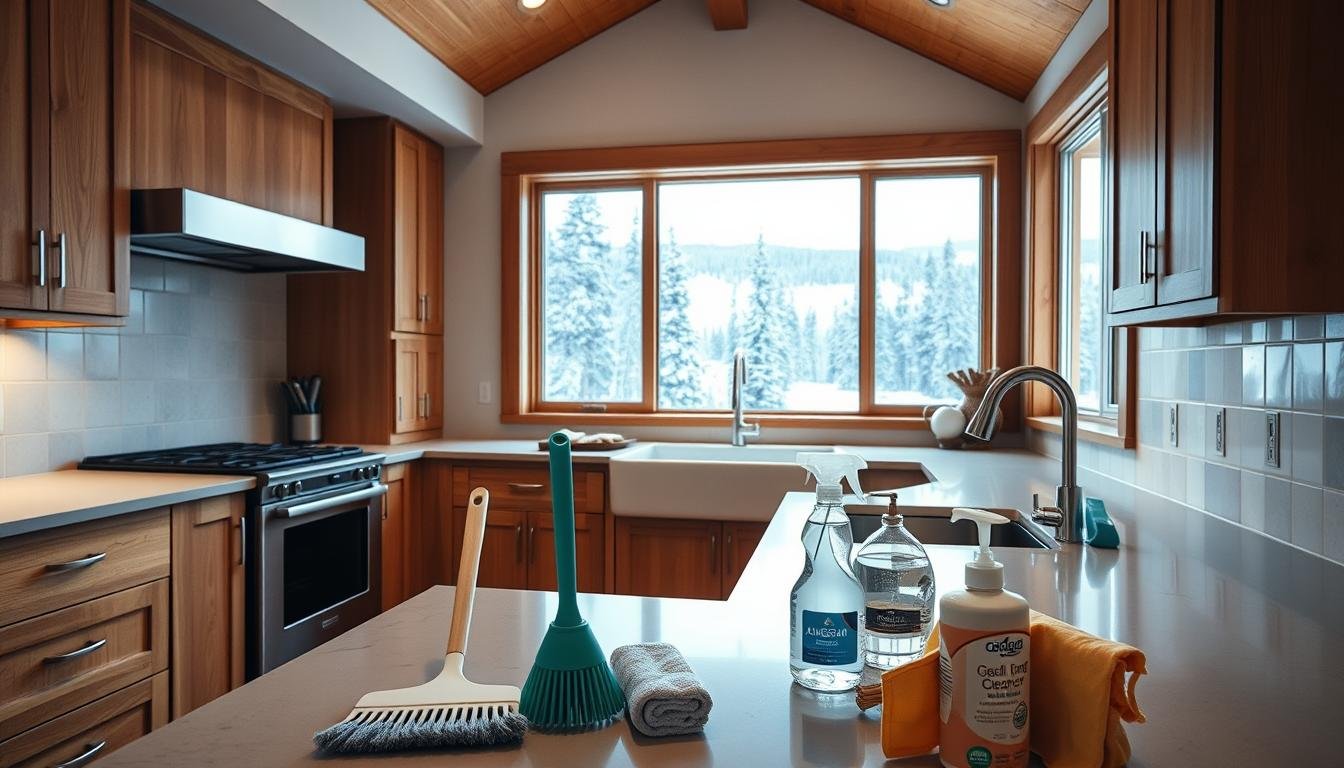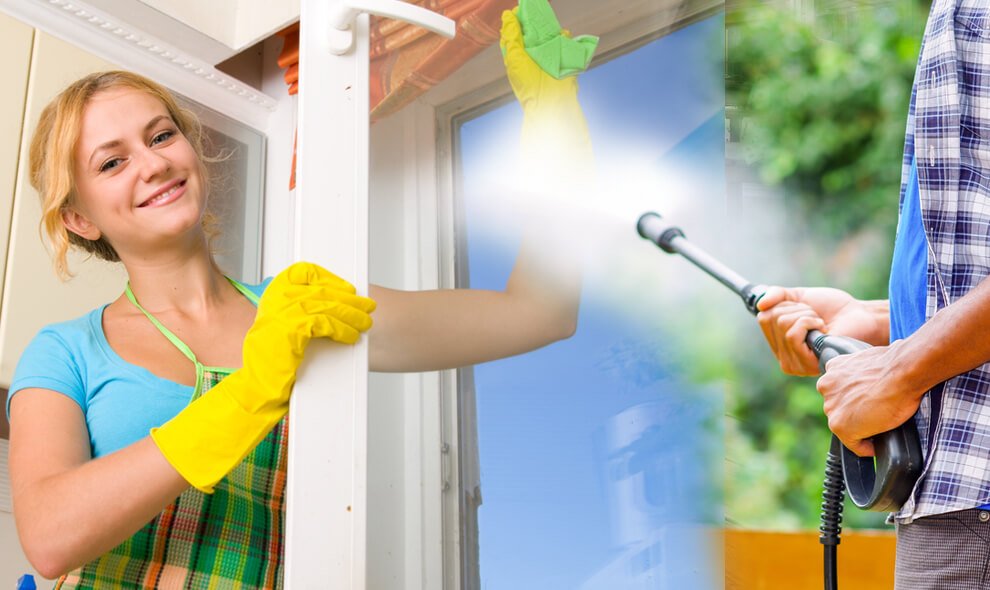It’s November in Anchorage, and your kitchen’s pipes are creaking as temperatures dip below zero. You’ve left the ice cream maker plugged in, the dishwasher’s drainage is sluggish, and the oven’s heating elements are working overtime. This isn’t just a cold-weather inconvenience—it’s a wake-up call. Seasonal kitchen maintenance isn’t just a checklist; it’s your kitchen’s lifeline through Alaska’s extremes.
Imagine a home chef scrambling to thaw pipes after a winter power outage, or a summer barbecue grill corroding from humidity. Alaska’s swings from -40°F winters to 70°F summers stress every appliance and surface. Proper Alaska kitchen maintenance isn’t guesswork.
In Anchorage alone, even temporary food vendors must follow strict codes for water storage and refrigeration—proof that small details matter. This guide breaks down simple steps to shield your kitchen from seasonal wear. From insulating pipes to checking seals on your fridge, these tasks ensure your kitchen stays reliable year-round.
Every season brings its own test. Winter’s freezing temps crack hoses, summer’s rain seeps into foundations, and fall’s leaves clog drains. The Municipality of Anchorage’s 2010 Food Code underscores this: even small neglect can multiply into costly repairs. But with the right plan, your kitchen can weather anything. Let’s start with the first steps to protect your space—before the next snowstorm or heatwave hits.
Understanding Alaska’s Unique Climate Impact on Kitchens
Alaska’s extreme temperatures and shifting seasons demand special attention to kitchen upkeep. From freezing winters to thawing springs, your kitchen faces challenges no other state matches. Here’s how to protect your space:
The Effects of Humidity and Temperature Fluctuations
Wooden cabinets and countertops expand and shrink with temperature swings. Imagine a warped wooden cutting board or a misaligned drawer—these are common results of Alaska’s seasonal shifts. Refrigerators work overtime in summer, creating condensation that can damage floors or wiring. These issues need proactive solutions like moisture-absorbing mats or yearly appliance checks.
Common Challenges Faced by Alaskan Kitchens
- Winter dryness: Heated indoor air drops to 10% humidity, cracking wooden surfaces.
- Freezing pipes: Uninsulated pipes risk bursting, costing thousands in repairs.
- Seasonal stress: Appliances like ovens and dishwashers wear faster in extreme conditions.
Seasonal Changes: What to Expect
Spring thaws can cause moisture seepage under sinks, while winter’s deep freezes demand insulation checks. Summer’s long days expose countertops to UV fading near windows. Fall is the time to seal gaps around vents to block winter drafts. Seasonal kitchen maintenance means aligning tasks with Alaska’s rhythms—not generic guides.
Alaska kitchen renovation projects often focus on durable materials like quartz over wood. Working with local Alaska kitchen maintenance services ensures solutions tailored to your climate. Remember: small steps now prevent big headaches later.
Spring and Summer Maintenance Essentials
Alaska’s short summers call for smart kitchen upkeep to protect your appliances and home. Start by tackling these tasks before temperatures rise:
Cleaning and Inspecting Appliances
Give your fridge, stove, and microwave a deep clean. Wipe down coils under the fridge monthly to prevent dust buildup. For microwaves, heat a bowl of water and lemon slices to loosen splatters. Check seals on oven doors and fridge gaskets for cracks—replace worn parts to stop cold air leaks. These steps cut energy waste and extend appliance life.
Outdoor Cooking Equipment Care
Before firing up your grill or smoker, inspect hoses and gas lines for rust. Clean burners with a wire brush and test ignition systems. Store unused equipment in a dry shed, covered to block moisture. Pro tip: Lubricate moving parts like lid hinges to prevent corrosion from coastal Alaska air.
Pest Control Measures
Seal cracks around windows and vents with silicone caulk. Use glass jars for flour and sugar—rodents love pantry staples. Check cabinets weekly for cobwebs or droppings. Keep compost bins at least 20 feet from your home to deter wildlife.
Small steps like these add up. Monthly checks on seals, quarterly grease trap cleanouts, and yearly professional inspections can save hundreds in repairs. Prioritize these tasks before summer’s peak to keep your kitchen running smoothly all season long.
Fall and Winter Kitchen Preparations
As Alaska’s autumn fades into winter, preparing your kitchen for extreme cold and long nights ensures both safety and comfort. Proper Winter kitchen maintenance in Alaska starts with smart insulation choices. Applying window films or sealing drafts around exterior vents traps heat, reducing energy waste. Focus on under-sink areas where pipes meet walls—these spots are prime for frost damage. Simple steps like installing door sweeps or upgrading weatherstripping can make a big difference.
Insulation and Heat Retention Strategies
Protecting your kitchen’s structure means safeguarding your family’s routine. Insulated pipe sleeves and heat tape for exposed lines stop freezing, while open cabinet doors under sinks let warm air circulate. If you’re planning a Alaska kitchen renovation, consider adding radiant heating in floors or under cabinets. Small changes like these turn your kitchen into a cozy hub during storms.
Addressing Plumbing Risks in Cold Weather
Winter’s deep freezes test even the sturdiest pipes. Check for cracks in outdoor spigots and insulate lines near exterior walls with Arctic-grade foam sleeves. Let faucets drip slightly during extreme cold to relieve pressure. If you’re away during winter, consult Kitchen maintenance services in Alaska to drain systems safely. Proactive steps now prevent bursts that could ruin your holiday meals.
Emergency Preparedness and Food Storage Tips
Stocking a well-stocked pantry means keeping canned goods, grains, and spices organized. Rotate stored food every six months and use airtight containers to keep pests out. For power outages, store a cooler with gel packs near the fridge. Keep a list of nearby Alaska kitchen renovation experts in case of emergencies. Simple steps like these make winter’s challenges manageable.
Year-round, What Seasonal Maintenance Does Your Kitchen Need in Alaska? depends on planning. By focusing on insulation, plumbing, and supplies now, you’ll ensure your kitchen stays functional and warm. Small investments in maintenance today mean less stress when snow blankets the landscape. Your kitchen isn’t just a room—it’s your winter home base. Protect it well.



